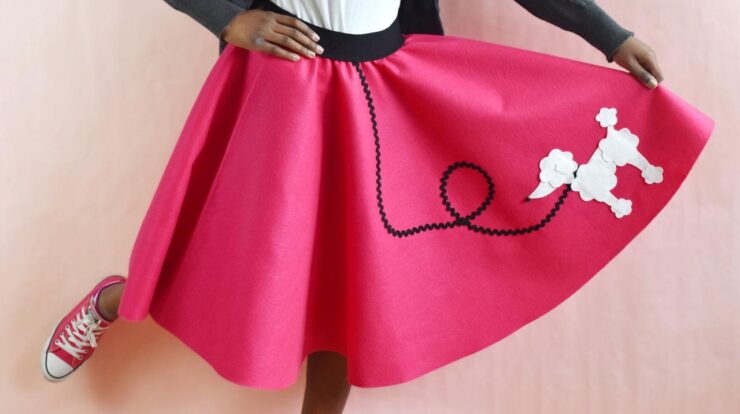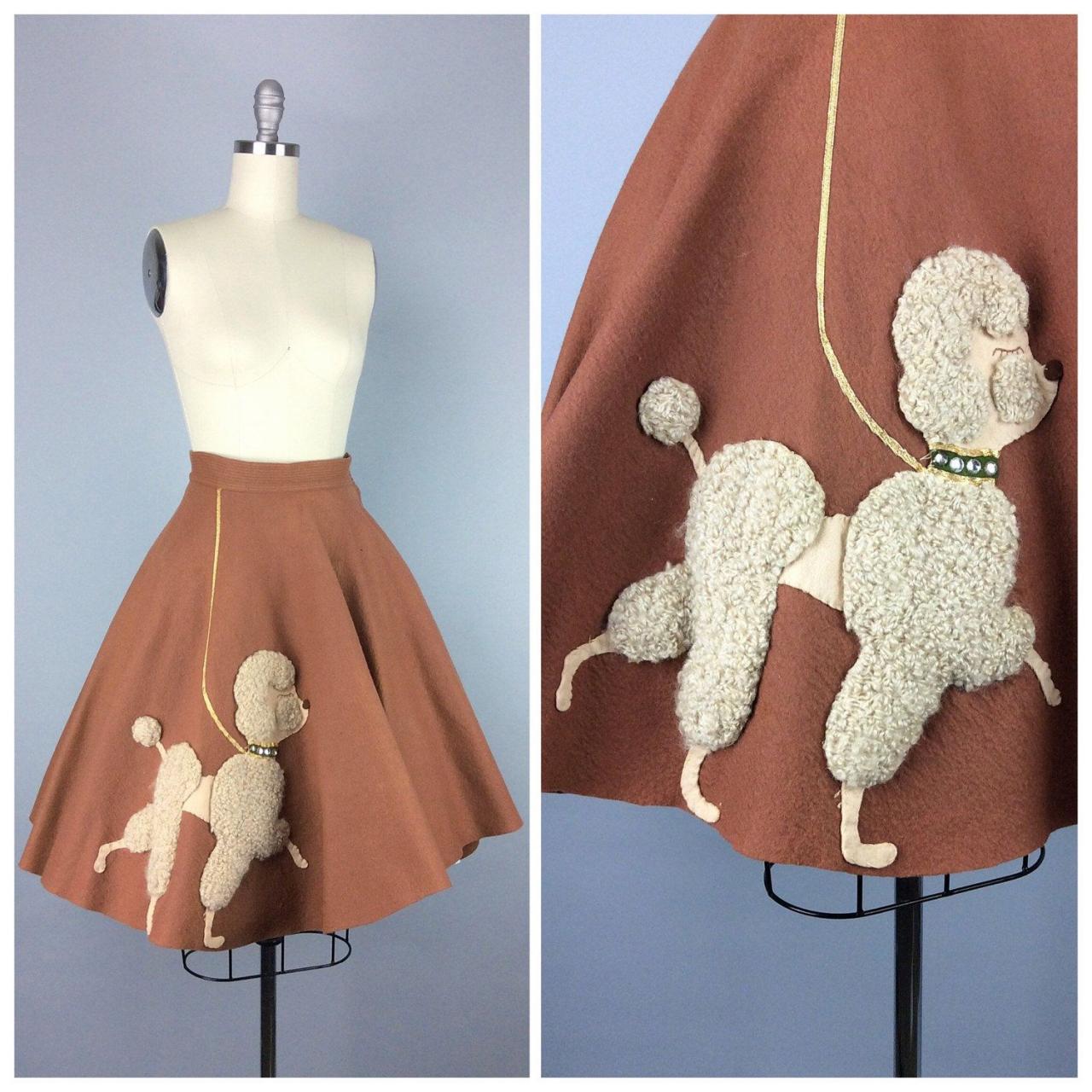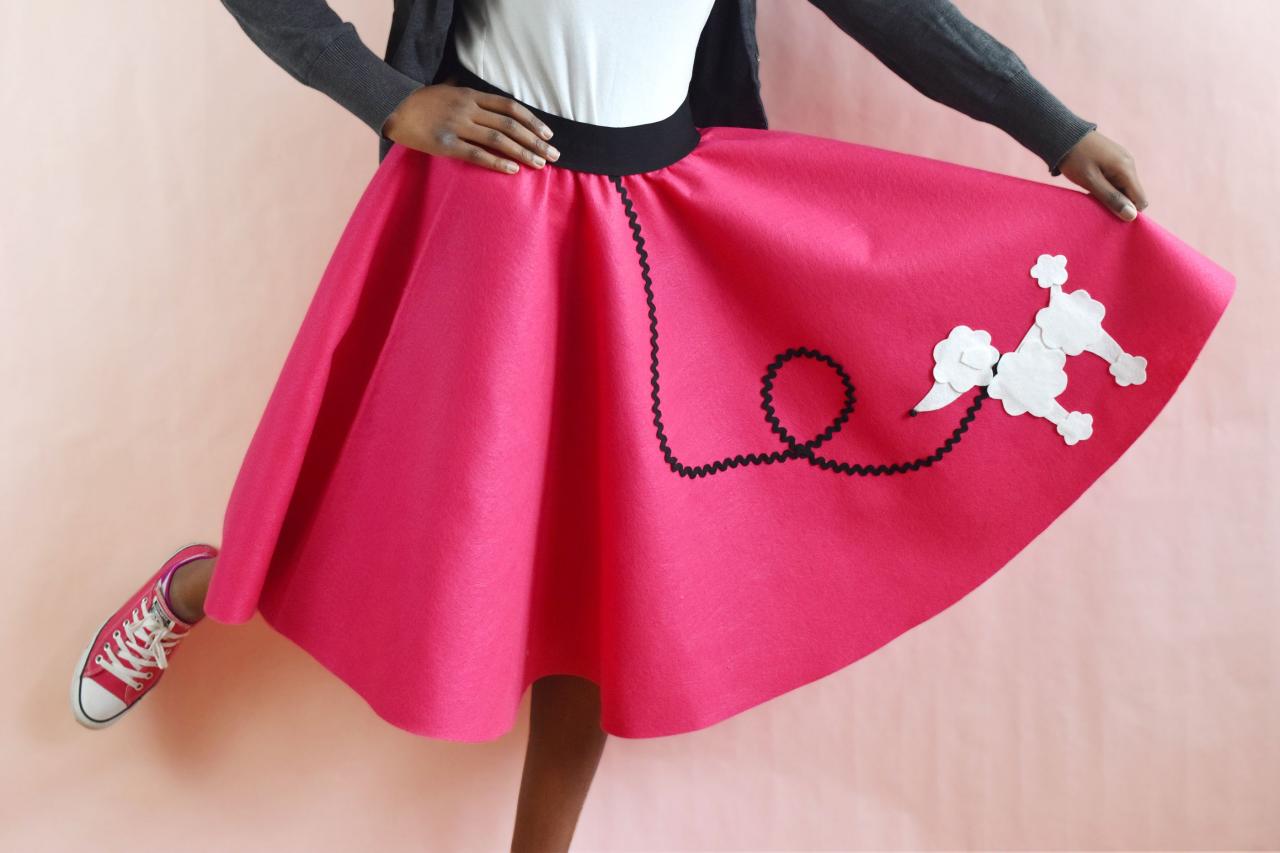
The poodle skirt, an iconic symbol of the 1950s, has captured the hearts and imaginations of fashion enthusiasts for generations. Its playful design and cultural significance have made it a beloved piece that continues to inspire contemporary fashion.
From its origins in the post-war era to its modern interpretations, the poodle skirt has evolved to reflect the changing tastes and trends of society.
History of the Poodle Skirt

The poodle skirt, an iconic symbol of the 1950s, emerged during a time of social and cultural change in the United States. Its origins can be traced back to the post-World War II era, when teenagers began to assert their independence and express their unique identities through fashion.
The popularity of the poodle skirt was influenced by several factors. The economic boom of the 1950s allowed for increased consumer spending, and teenagers had more disposable income to spend on clothing. Additionally, the rise of rock and roll music and the emergence of teenage subcultures created a demand for clothing that reflected their rebellious and playful spirit.
Design and Construction of the Poodle Skirt
Poodle skirts are typically characterized by their full, flared silhouette, reaching mid-calf or knee length. They were typically made from cotton or felt and featured a wide waistband that sat high on the waist. The skirts were often decorated with appliqués or embroidery of poodles, the popular breed of dog at the time.
The construction of a poodle skirt involved cutting out the fabric pieces and sewing them together. The waistband was typically gathered or pleated to create fullness, and the skirt was often lined with a contrasting fabric for added structure.
Cultural Significance of the Poodle Skirt
The poodle skirt became a symbol of the carefree and optimistic spirit of the 1950s. It was associated with the “bobby soxer” subculture, teenage girls who were fans of rock and roll music and sought to express their individuality through their fashion choices.
The poodle skirt also represented a departure from the more formal and conservative clothing styles of previous decades. It allowed teenage girls to express their personal style and assert their independence from their parents.
Modern Interpretations of the Poodle Skirt
The poodle skirt has seen a resurgence in popularity in recent years, with contemporary fashion designers incorporating elements of the classic design into their collections.
Modern interpretations of the poodle skirt often feature updated fabrics, such as lace or leather, and embellishments, such as sequins or studs. Designers have also experimented with different silhouettes, such as shorter lengths and A-line shapes.
The Poodle Skirt in Popular Culture
The poodle skirt has made numerous appearances in popular culture, including in movies, television shows, and music videos.
The skirt was featured in the iconic 1978 film “Grease,” in which the character Sandy Olsson (played by Olivia Newton-John) wears a poodle skirt as part of her transformation from a good girl to a greaser.
Closure

Today, the poodle skirt remains a cherished symbol of femininity and nostalgia. Its enduring popularity is a testament to its timeless appeal and the enduring power of fashion to shape cultural perceptions.
Query Resolution
What is the origin of the poodle skirt?
The poodle skirt emerged in the 1950s as a symbol of teenage rebellion and individuality.
What are the typical design features of a poodle skirt?
Poodle skirts are typically made of felt or cotton and feature a full, flared silhouette with a poodle appliquéd on the front.
How has the poodle skirt been used to express personal style?
The poodle skirt has been a canvas for self-expression, allowing wearers to showcase their creativity and individuality through the use of different fabrics, colors, and embellishments.






